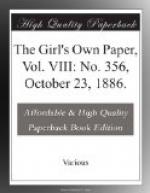The clay used in making tiles does for modelling, but perhaps the best is that which burns a cream colour. It is a dull grey colour, rather dark before it is fired, and it should be noticed that it is difficult to tell the colour clay will burn by its appearance when unbaked. Thus a grey clay may burn a rich red or pale cream. The qualities necessary in clay for modelling are plasticity, which enables it to be worked without falling to pieces, and fineness—a perfect freedom from grit, small stones, and other impurities. It should be quite soft to the touch, and when pressed and kneaded should feel smooth and silky. Old clay is more plastic as well as being tougher than new, and in potteries clay is often kept a considerable time before it is used. The clay should not be allowed to dry when it is not in use, and to prevent this it must be wrapped in wet flannel. Should it dry quite hard, there is nothing to do but to put it into a vessel and pour water on it, allowing it to stand until the clay becomes soft. Some of the moisture must then be allowed to evaporate, otherwise it is too soft for use. This is another point to be observed in clay used for modelling. It must not be too damp. If it sticks to the fingers it is too wet, and if it resists the pressure of the fingers, too dry. The state between stickiness and stubbornness is what is wanted.
Now as to the tools. Wooden modelling tools can be purchased at some artists’ colourmen, and also at some tool shops. You must choose those tools you think look handiest. A little practice will soon show you which are the best to have.
Each modeller has a predilection for certain tools, and it will take my readers very little time to find out which tools give the best results. I often shape those I buy myself to fit them for particular work. In addition to these wooden tools, it is necessary to have a fine steel one to work the clay when it is dry. Modelling tools are very inexpensive. You really require no other tools but these wooden ones and a steel one, but it is necessary to have a few boards to work your clay upon. They should be strong, with battens at the back to prevent them warping, which they are liable to do owing to the dampness of the clay.
We will start our work with a very simple design, for our aim should be to overcome the difficulties by degrees. The design I have chosen (fig. 1) was modelled as a tile about eight inches square, and the first thing to be done is to roll out a piece of clay about half an inch thick, and fairly flat all over. It is as well to work the clay up in one’s hands, damping it occasionally if too dry. If clay be allowed to remain untouched for any length of time it gets set, and does not work easily; therefore, thoroughly work it up with the hands. It may be made into a ball, and can be rolled out flat with a thick ruler or rolling pin. The clay has a tendency to curl up round the rolling pin, and care must be taken to prevent this. If the rolling




